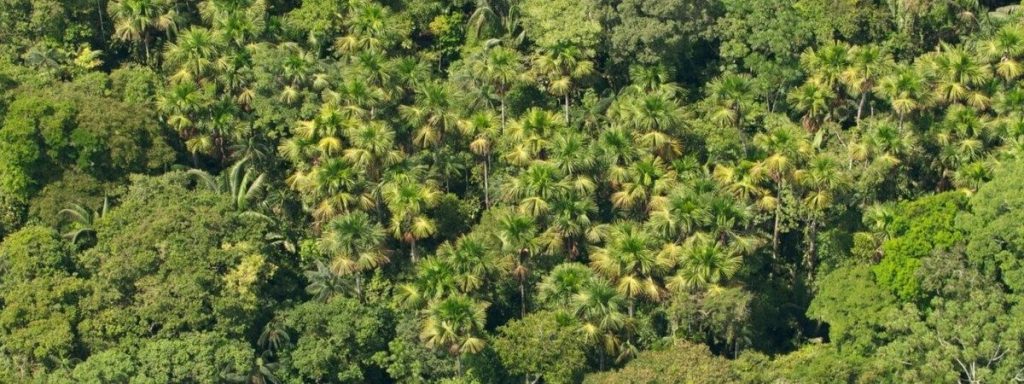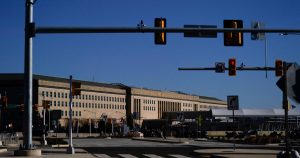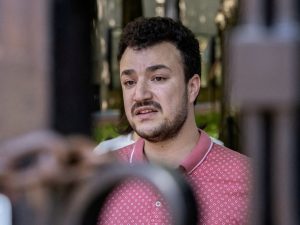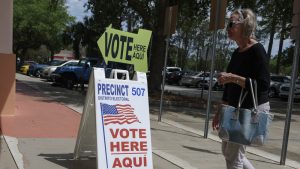- Colombia has created a first-of-its-kind territory meant to protect a group of Indigenous people living between the Caquetá and Putumayo Rivers in the Amazon Rainforest.
- The 2.7-million-acre (1,092,849-hectare) territory is the first in the country specifically designed for people living in isolation.
- The Yuri-Passé people have faced increasing pressure from illegal mining and organized crime groups, forcing neighboring Indigenous communities to reach out to the government on their behalf.
Colombia has created a first-of-its-kind territory meant to protect a group of Indigenous people living away from regular contact with the rest of the world.
Located in the southern department of Amazonas, the over 1-million-hectare (2.7-million-acre) territory stretches between the Caquetá and Putumayo Rivers that the uncontacted Indigenous Yuri-Passé people call home. It’s the country’s first protected area specifically designed for people living in isolation.
“Through this resolution, Colombia is taking a key step towards the protection of the rights and territory of Indigenous groups in isolation, reaffirming its commitment to their autonomy and survival,” said a statement from Amazon Conservation Team, one of the organizations that helped create the territory.
The territory prohibits economic development and forced human contact. Part of it overlaps with Río Puré National Park and includes an adjacent buffer zone that will act as a transition space to help limit human disturbances, Amazon Conservation Team said in the statement.

The creation of the territory follows years of advocacy by human rights and conservation groups to establish laws recognizing the rights of Indigenous peoples living in isolation, as well as to develop mechanisms for safeguarding lands they depend on.
Only last year, the Ministry of Interior confirmed that there were groups living in isolation in that part of the Amazon Rainforest, a remote area near the border of Peru and Brazil.
The Ministry of Interior didn’t respond to a request for comment.
For decades before that, neighboring Indigenous communities, who are in contact with the rest of the world, knew about the isolated groups and wanted the government to help them, according to Amazon Conservation Team. But they didn’t always trust the government, often opting to not mention the other groups or where they might be found, according to Amazon Conservation Team members working in the area.
Back in 1969, military officials captured an Indigenous family in the area who appeared to be living in isolation. The family was brought to a nearby town before being released back into the forest.
The encounter was followed by years of no contact or official evidence of their presence.

Without a formal mechanism to protect the isolated groups, the government established Río Puré National Park in 2002 as a precautionary measure, ensuring at least a minimum level of protection for any unknown Indigenous people who might be living there.
In 2010, increasing pressure from mining and organized crime led neighboring Indigenous communities to approach the government about helping the isolated groups, Amazon Conservation Team said. It resulted in a research project to prove the existence of the Yuri-Passé and advocate for a territory for their protection.
The government published a decree in 2018 outlining the use of intangible zones for the protection of isolated peoples, including in areas that are already protected by parks. With that decree, civil society groups, researchers and Indigenous communities were able to establish the new territory.
The Indigenous communities’ leadership in the process is a major victory in itself, members of Amazon Conservation Team said. It shows that Indigenous people have a role in the protection of isolated groups, and can participate in advocacy that leads to real world resolutions.
“The whole process was established and developed by Indigenous people, which is very important,” an Amazon Conservation Team spokesperson, who wished to remain anonymous for security reasons, told Mongabay. “It wasn’t the state that did the whole process and then set up the consultation with Indigenous authorities at the end. It was the other way around.”

In addition to uncontacted Indigenous groups, the area is highly biodiverse, including over 600 recorded species like the Oncilla (Leopardus tigrinus), giant armadillo (Priodontes maximus) and giant anteater (Myrmecophaga tridactyla).
Park rangers were present in Río Puré National Park until 2019, when threats from organized crime made working in the area too dangerous. Since then, the park hasn’t had a government ground presence and relies on remote technology and Indigenous groups for monitoring, according to the Amazon Conservation Team spokesperson. The new territory will also go without rangers for now.
The Ministry of Environment and Sustainable Development didn’t respond to a request for comment.
Recognizing the territory for isolated groups will hopefully result in more attention for the area and increased government action to protect vital ecosystems and the people who live there, the spokesperson said.
“The park right now is orphaned, in a way, so we hope that these types of resolutions and these types of decrees and judicial orders…will translate into a coordinated effort so that the park rangers can come back,” he said.
Banner image: The forest in the Puré River region. Photo by Cristobal Von Rothkirch/ACT.
See related from this reporter:
Uncontacted Ayoreo could face health risks as Gran Chaco shrinks, experts warn
FEEDBACK: Use this form to send a message to the author of this post. If you want to post a public comment, you can do that at the bottom of the page.








